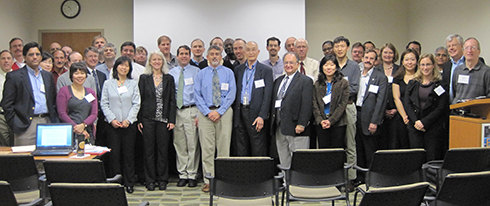University of Maryland hosts the 2nd NOAA User Workshop on GPM
A three day meeting, co-sponsored by NESDIS/STAR and NWS/OHD, is being held at the Earth System Science Interdisciplinary Center (ESSIC) at the University of Maryland from November 29th through December 1st. This meeting follows up on the highly successful first workshop from August 2010 and focuses on user applications of GPM-era data and products. The meeting attendees, including government researchers, academics, and representatives from commercial industry, will hear presentations from NOAA and NASA representatives as well as other end users. The meeting is organized around the five high level recommendations from the first workshop with anticipated outcomes for each topic:
| Topic | Expected Outcome |
| How can NOAA prepare for and accelerate the use of GPM data? | An action plan that utilizes existing and planned NOAA test beds and defines a NOAA GPM proving ground. |
| How can NOAA enhance its R&D and encourage scientific and technological innovation to maximize use of GPM-era data? | A prioritized list and action plan of envisioned R&D which will utilize GPM-era data |
| How can NOAA develop synergy with other existing and developing programs that are likely to have budgets over the next five years? | Identify linkages to major NOAA LO programs related to hydrology and their associated observing systems and a set of specific actions to get them engaged with GPM. Preliminary draft plan for the proposed "One-NOAA-One Precipitation" project |
| What is the path forward to provide GPM-era data operationally at NOAA with minimal data latency and in the necessary format? | A clear definition of the full spectrum of user needs in terms of both the continuity of current data products and potential products from GPM-era sensors. |
| How can NOAA integrate GPM-era satellite data into "merged" products (e.g., Q2, CMORPH, etc.) and move toward a "One NOAA" suite of precipitation products? | An action plan describing how GPM data could be utilized for multi-sensor precipitation estimation and the anticipated benefit to current NOAA precipitation product(s) |
For further information visit the official meeting website at http://www.star.nesdis.noaa.gov/star/meeting_GPM2011.php


